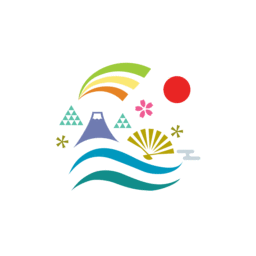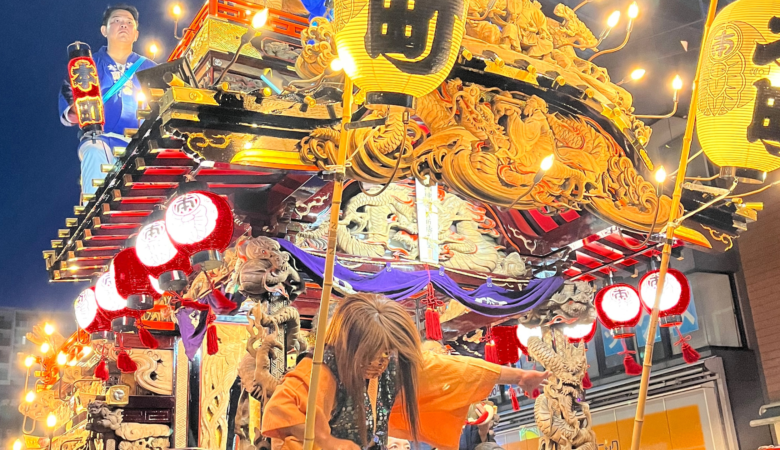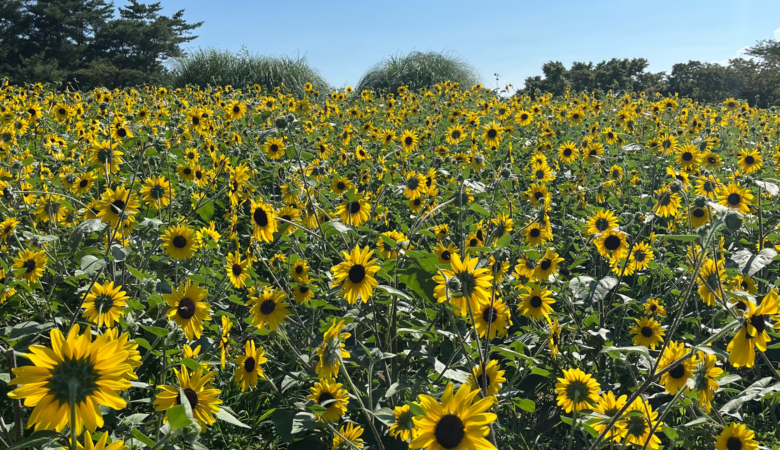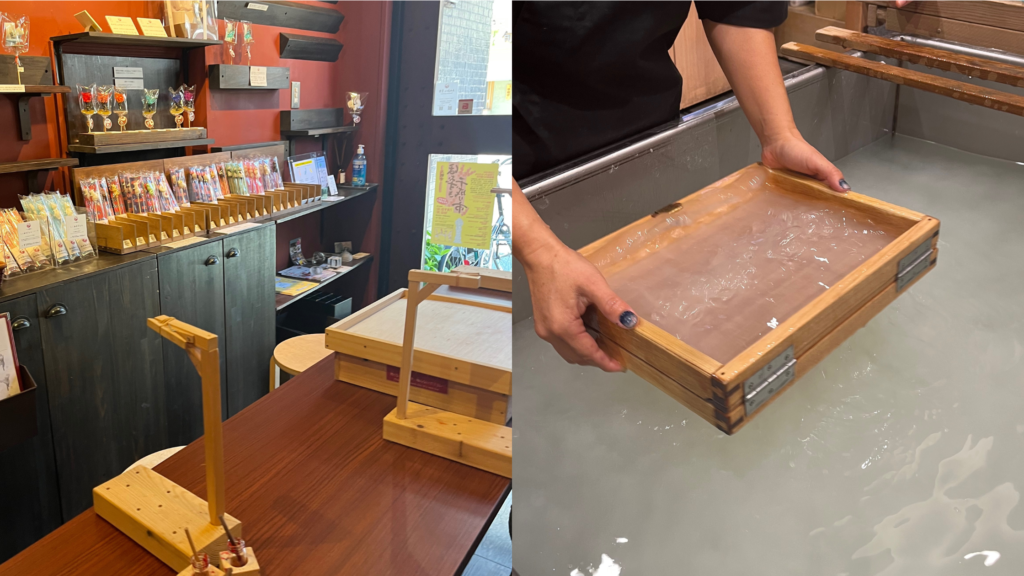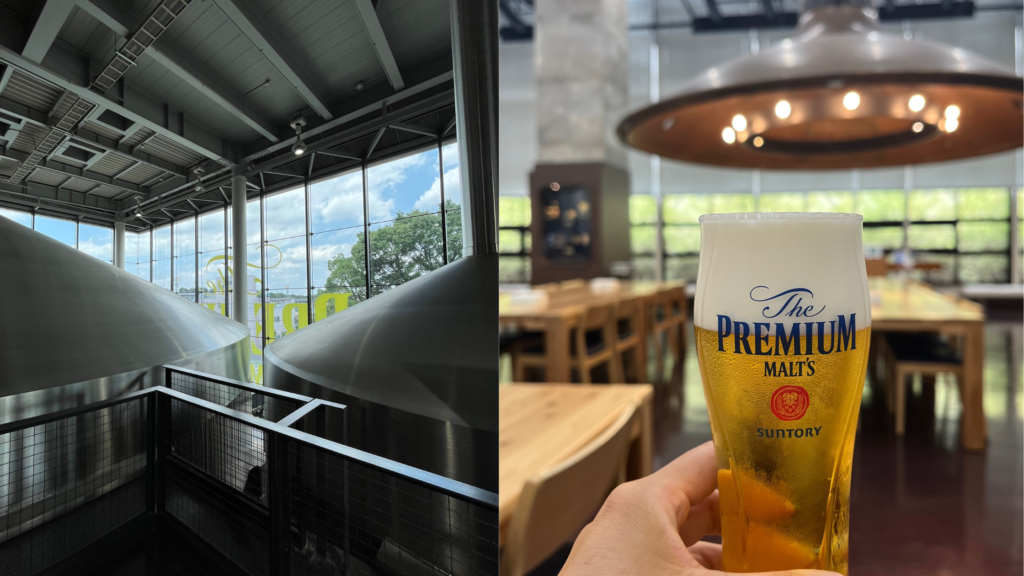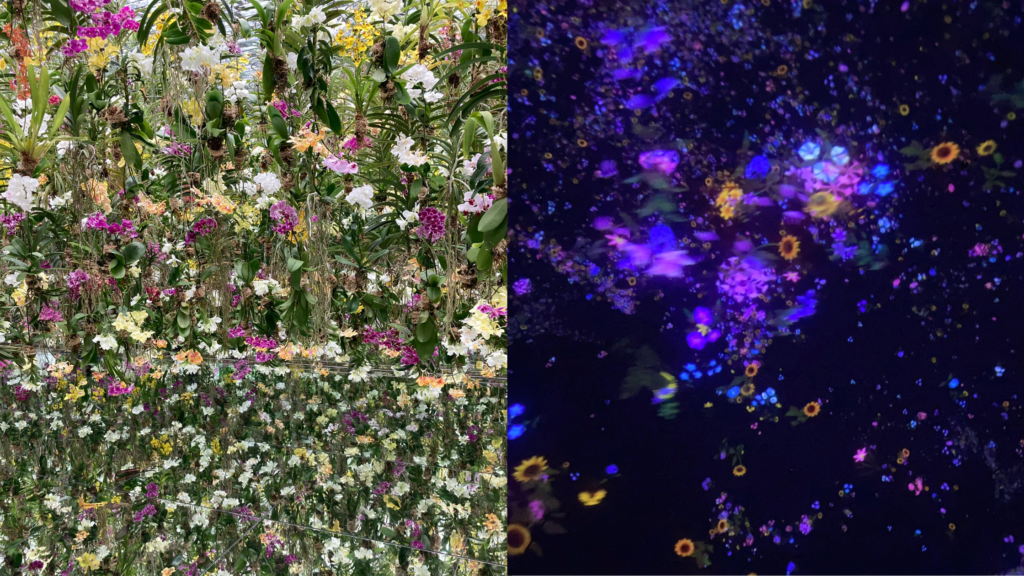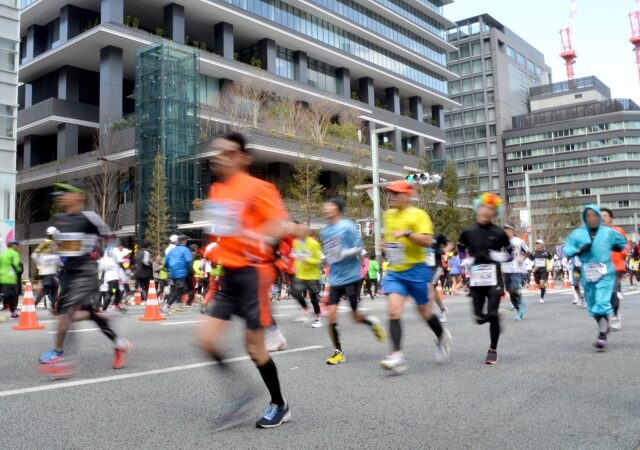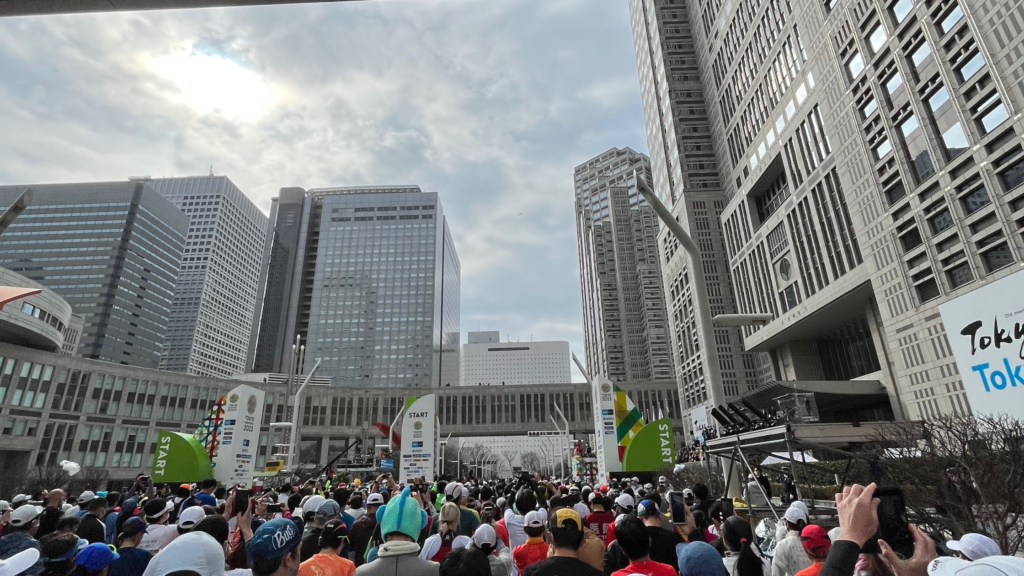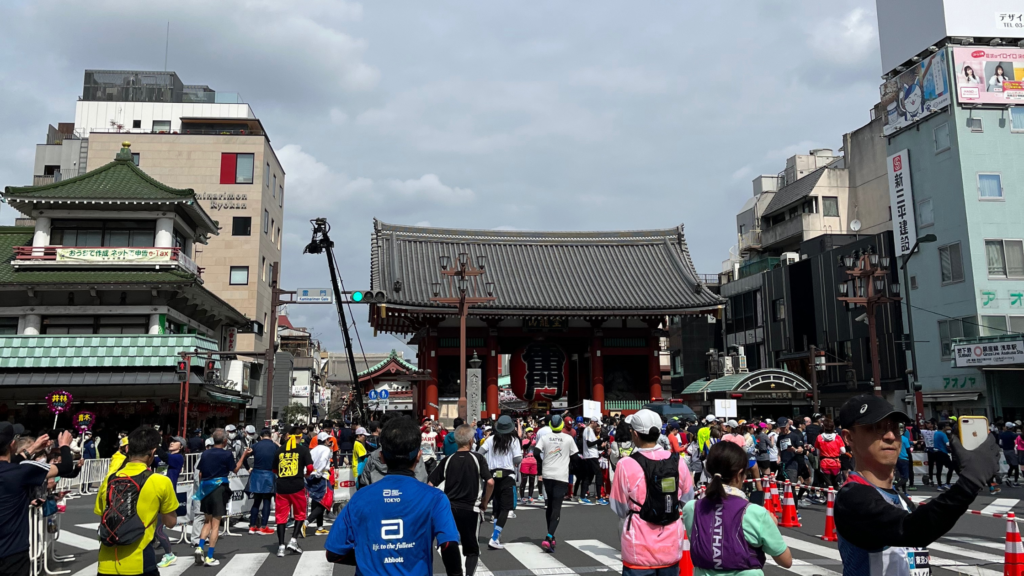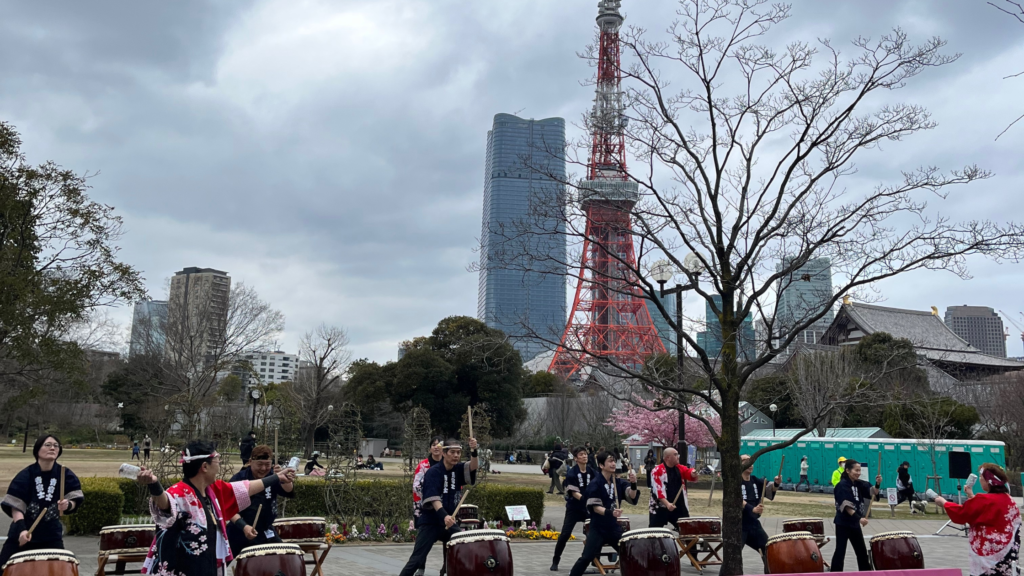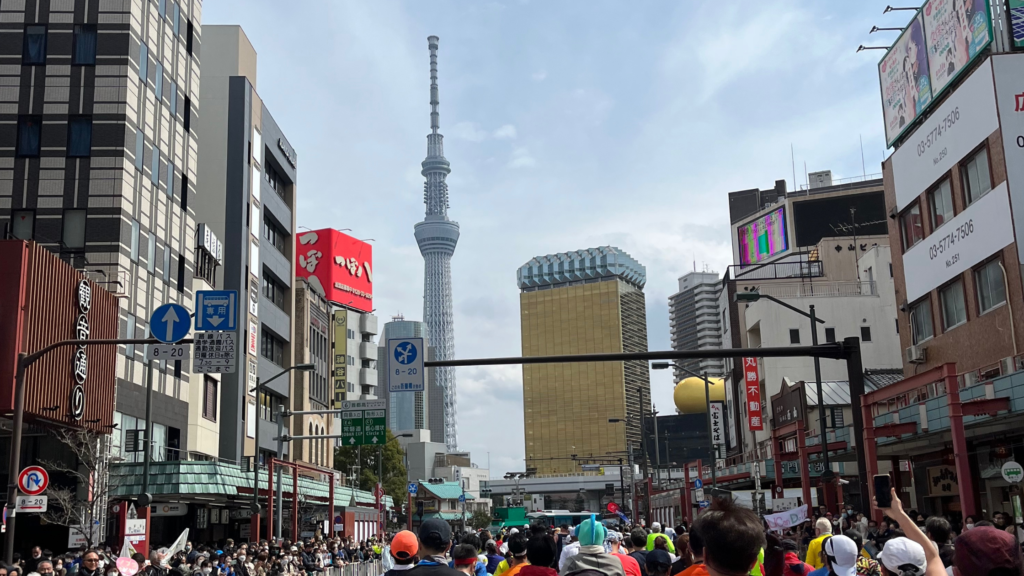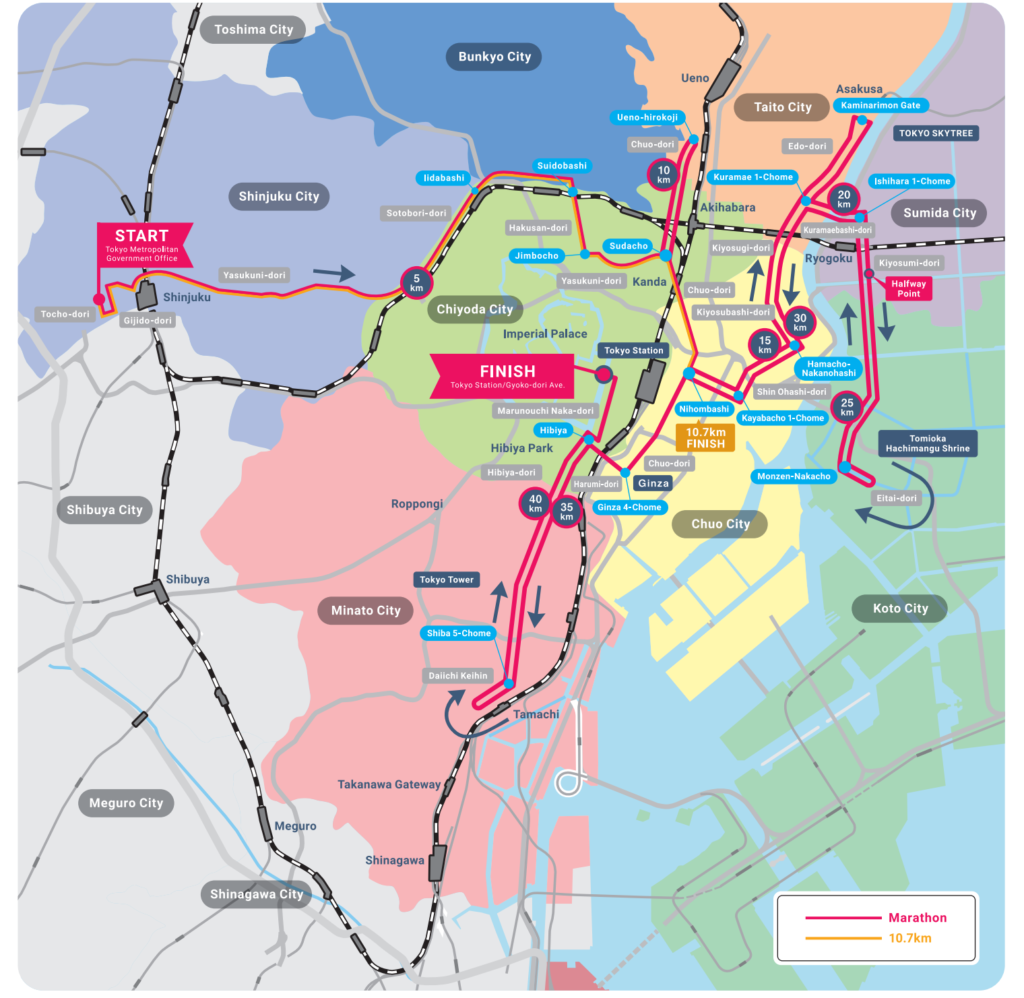It’s almost done the hottest summer ever. The weather in nighttime is much better than July or August. I’m looking forward for coming the cool and beautiful Autum season from end of September.
This time I’d like to share with you some summer festivals which I visited. It was so excited in these festivals. It’s my pleasure if it will be supporting your better planning next summer.
Gion Festival (Kyoto)
Event date and Place: All July, highlight day is 14th-to 17th July 2023, Karasuma street Kyoto
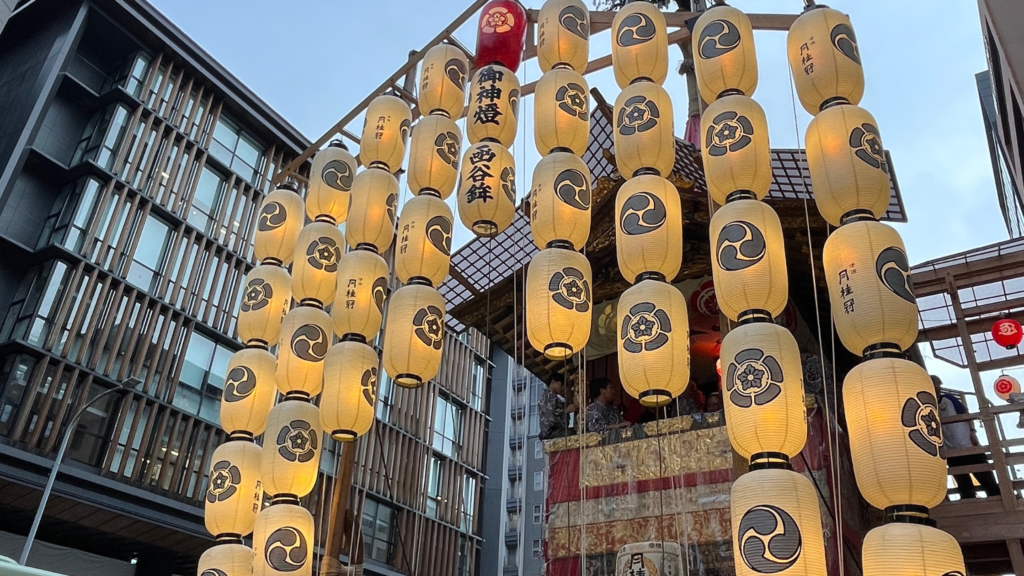
What is the festival:
Gion Matsuri festival is the famous festival for one of big three festival in Japan.
Gion Matsuri is one of the most important festivals of Yasaka Jinja Shrine in Kyoto with a tradition of more than 1150 years and takes place over the entire month of July. The month-long Gion Matsuri is a festival to prevent epidemics. During this period, various rituals and events are held, and the downtown of Kyoto is in a festive mood. Its highlight is the magnificent Mikoshi-Togyo and Yamahoko-Junko on July 17 and 24. The festival can be observed as soon as getting off the train at Karasuma station.
History:
Gion Matsuri originated in 869 (Jogan 11th) when a terrible pestilence spread across the entire land of Kyoto, and people were suffering from it. In the past, people used to think that the cause of it is vengeful spirits and evil deities. The people of Kyoto attempted to appease them and pray for an end to the pestilence by erecting 66 spears (called Hoko) representing the provinces of Japan in Shinsen-en, a sacred imperial garden in Heian Capital, and carrying around the Mikoshi (a portable shrine) for the deity of Yasaka Jinja Shrine to Shinsen-en. In this way, Gion matsuri began as a festival to eradicate pestilences and prevent epidemics. The people of Kyoto have protected and supported this festival to this day in the face of many interruptions caused by civil wars and political reasons.
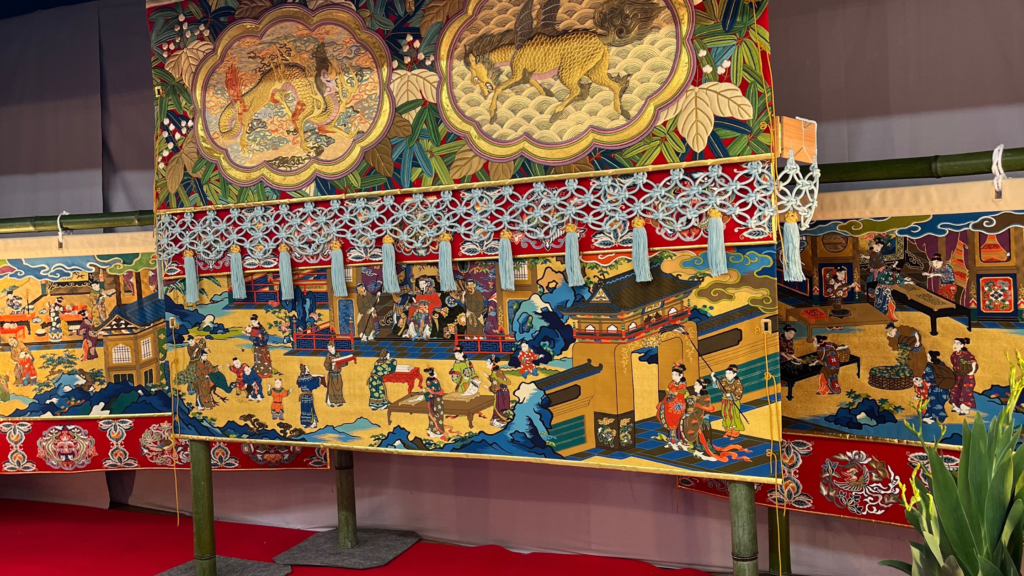
Highlight
The highlight events of Gion Matsuri take place in the Karasuma Street. During the three days preceding the procession, the respective Yama and Hoko are displayed within about a half kilometer of the intersection of Karasuma and Shijo streets. While they are on display, some of the floats can be entered by tourists.
The Matsuri festival becomes most exciting in the evenings, when from 18:00 until 23:00 the streets are closed to traffic and the area swells with food stands, drink vendors and other festival hallmarks. These festive evenings leading up to the procession are known as Yoiyama (July 16), Yoiyoiyama (July 15) and Yoiyoiyoiyama (July 14). Similar festivities also take place on the three evenings leading up to the procession on July 24, albeit on a smaller scale and with fewer road closures and stands. In 2023, road closures will happen only on July 15 and 16.
The processions of floats (Yamaboko Junko) take place between 9:00 and 13:00 on the 17th and from 9:30 to 11:50 on the 24th and follow a three-kilometer-long route along Shijo, Kawaramachi and Oike streets. Some paid seating is provided in front of the city hall (4100-5100 yen; advance booking required), but because the procession takes place over quite a long route and duration, good viewpoints can also be found elsewhere without too much trouble.
Tsukuda Festival (Tokyo Central)
Event day and place: beginning of August, Tsukuda Tokyo

What is the festival:
A summer of fisherman’s festival ”Tsukuda Matsuri” in Tsukuda and Tsukishima. Main place is Sumiyoshitaisha shrine in Tsukuda. Tsukuda and Tsukishima in central Tokyo, are areas that were all sea about 400 years ago. Fishermen from Osaka Prefecture landfilled and created this piece of land. The prayers of those fishermen still live on. The main festival of the Sumiyoshi Shrine is held once every 3 years. The excitement of the boisterous fishermen comes to a peak during the festival. .
The festival can be observed as soon as getting off the train at Tsukishima station.
History:
It was fishermen who came from Osaka that began to landfill the mudflats of the Sumida River inlet and settle there. This was about the time when the Edo shogunate was established in Tokyo. The Sumiyoshi Shrine built in Tsukuda in 1590, Tokyo is the Shinto deity re-enshrined from a shrine of the hometown of the fishermen in Osaka. Wishing for plenty of catch and safety at sea, the fishermen started a festival in 1646. The mikoshi, or the portable shrine, is raised high, to worship the Sumiyoshi Shrine.
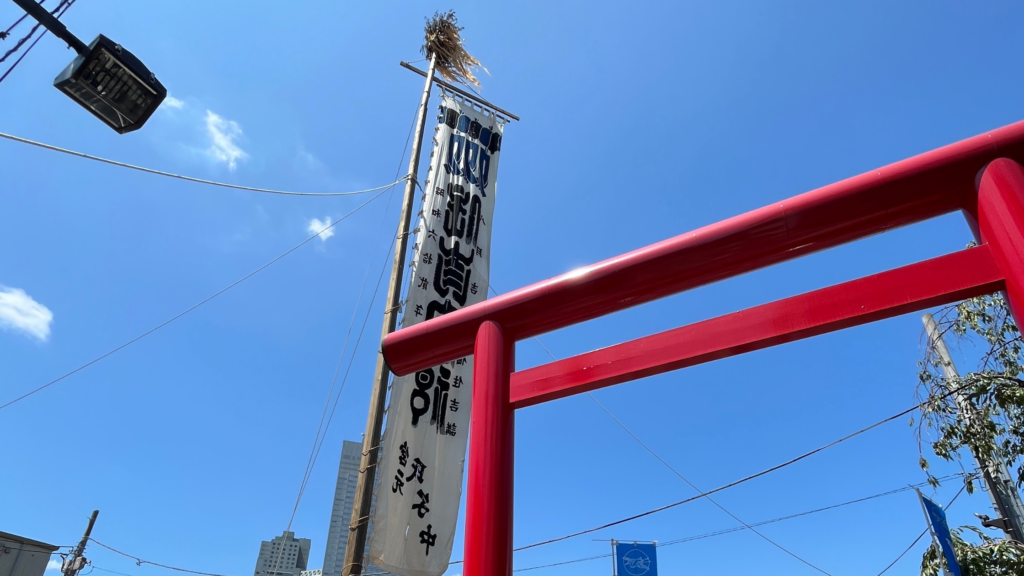
Highlight:
The Oonobori flag, a symbol of the festival 18 meter high from 1798, has erected for on 4th August 2023. For the next 4 days, the town will be full of festive activities. The main spectacle of the 2nd day is a competition in which participants try to grab the rope at the tip of the snout of lion figures. Grabbing the snout of the female lion brings the highest esteem. The main mikoshi will parade all over Tsukuda and Tsukishima the following 2 days.
Many portable shrines parade through the streets of Tsukuda and Tsukishima. It is also called the Water Festival because sprinkled water on the mikoshi for purifying.
Hachioji Matsuri (Tokyo South)
Event day and Place: beginning of August, Hachioji Tokyo
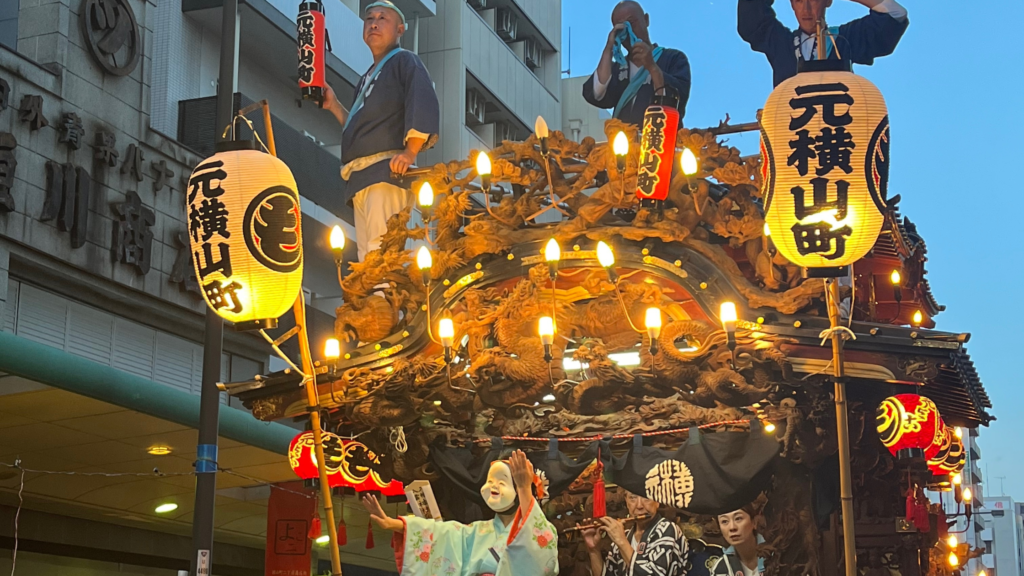
What is the festival:
Hachioji Matsuri is the one of the best float festivals in the Kanto region.
Along with the spectacular floats to appreciate, there will be taiko drumming performances, a cultural exchange with performers from Kaohsiung in Taiwan (one of Hachioji’s sister cities), a Hachioji lion dance display (an Intangible Folk Cultural Property), and more.
The festival can be observed as soon as getting off the train at Hachioji station.
History:
The float festival in the central city has been passed down since the Edo period, and the festival at Yahata and Yakumo Shrine is known as the Shimono Matsuri, and the festival at Taga Shrine is known as the Upper Matsuri Kamino Matsuri.” In the mid-Meiji period, it was a festival of doll floats, and from the late Meiji period to the early Showa period, it was famous throughout the Kanto region as a festival of carved floats with 20 carvings carved all over the bottom and top.
In 1945, eight of the floats were destroyed in a fire during the war, but they were rebuilt and the doll floats were restored. Currently, 19 floats from the 19 town associations participate in the Hachioji Festival, and every year they stage a spectacular float festival picture scroll along the Koshu Highway.
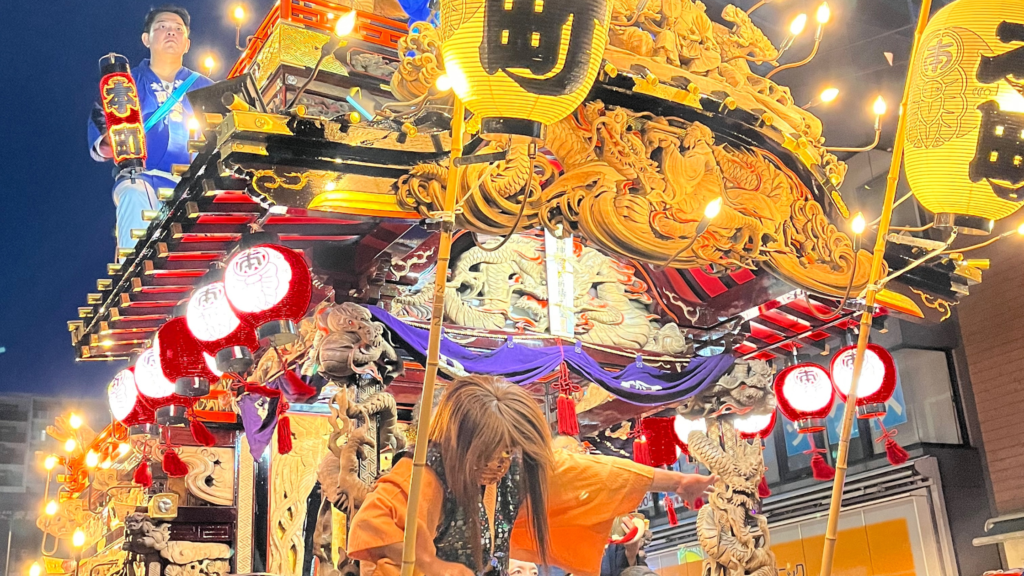
Highlight:
Nineteen floats with elaborate carvings will appear. During the night parade, the floats are lit up by tomoshibi, creating a fantastical spectacle that is different from the daytime.
In addition, traditional culture that Hachioji is proud of, such as the lion dance, which is an intangible folk cultural asset designated by Hachioji City, which is transmitted to shrines in the city, the Kanto Taiko Drum Battle that echoes in the summer sky, and the folk dance that dancers in yukata gather on the Koshu Kaido. We believe that you will be able to fully enjoy the many.
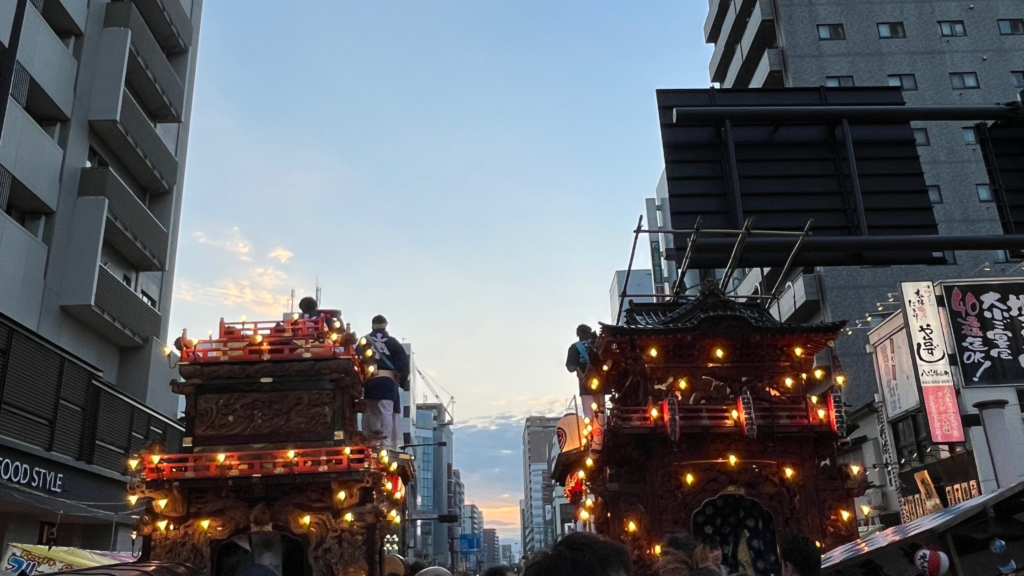
Fukagawa Festival (Tokyo)
Event day and place: Beginning of August, East Tokyo
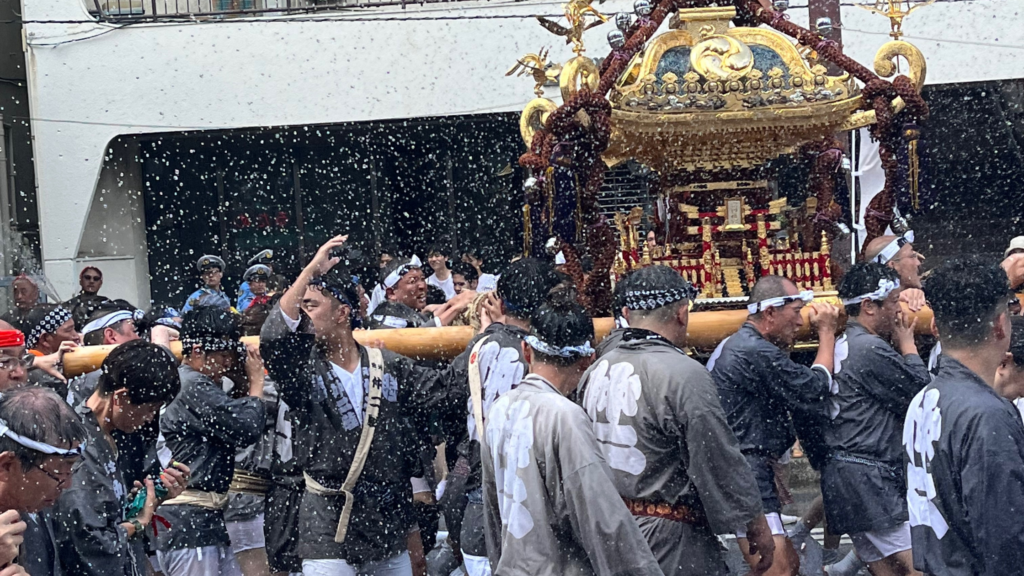
What is the festival:
The Fukagawa Hachiman Festival is one of three major festivals of Edo (the other two being the Kanda Matsuri and the Sanno Matsuri). It is particularly famous for the scenes of water being thrown at the mikoshi carriers by visitors, leading to the festival being known more informally as the Mizukake Matsuri or “Water Splashing Festival”. Every three years, the festival becomes the “hon-matsuri” when there is an added procession of the Hachiman imperial carriage along the streets of Koto Ward accompanied by 120 smaller mikoshi.
The festival takes place over five days, but Sunday is the day of the main parade (神輿連合渡御)—an 8km route which loops the shrine to the north from 7:30am to 3:30pm. The water-splashing starts once the procession has crossed Eitai Bridge about 1km northwest of Tomioka Hachiman Shrine
The festival can be observed as soon as getting off the train at Monzen nakamachi station.
History:
The festival was instituted by the Tokugawa shogunate in 1642 when the third shogun, Tokugawa Iemitsu, celebrated his first son, Ietsuna, becoming his successor. This event laid the foundation for the festival, symbolizing the close ties it has with the Tokugawa shogunate and the Imperial household.
So popular has this event become that it was known to have caused a bridge to collapse due to the crowd’s size in 1807. This event also gives the festival its other name, the “Water-throwing Festival,” as bystanders splash water on the Mikoshi carriers to cool them in the summer heat.
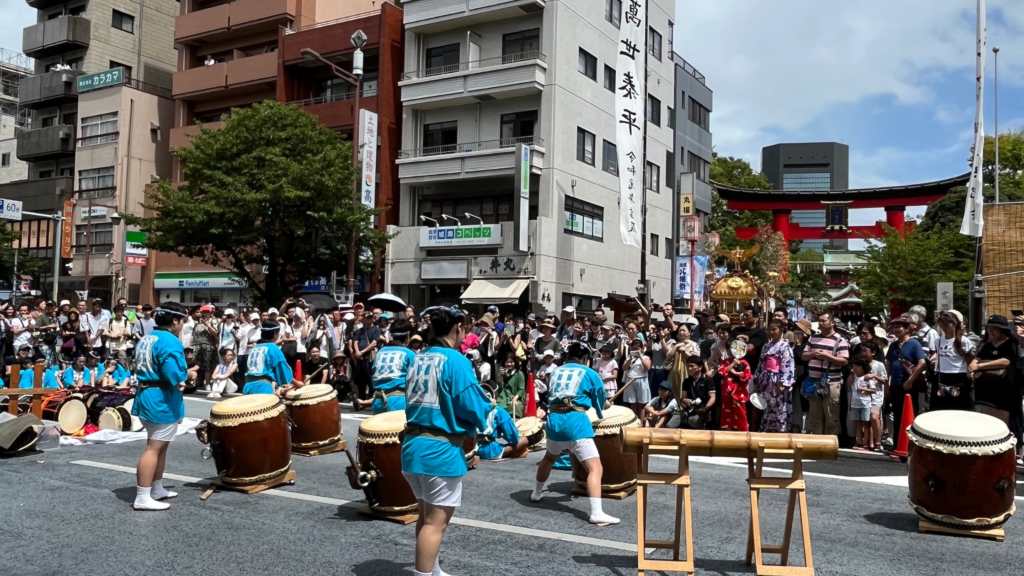
Highlight:
Every three years, a significant event known as Hon-Matsuri takes place, which is a spectacular parade of the Mikoshi (portable shrines) where the deities are carried from the shrine.
The festival involves dozens of Mikoshi from different neighborhoods, parading an approximately 8-kilometer route that starts and ends at the Tomioka Hachiman Shrine, traveling through various districts of Koto Ward. This grand procession paints a vibrant picture of communal spirit and historical continuity, attracting spectators from around the world. The carriers chant “Wasshoi!” in unison, a lively cry that ripples through the neighborhoods.
The festival stands as a beacon of cultural heritage, a lively testament to Tokyo’s rich past.
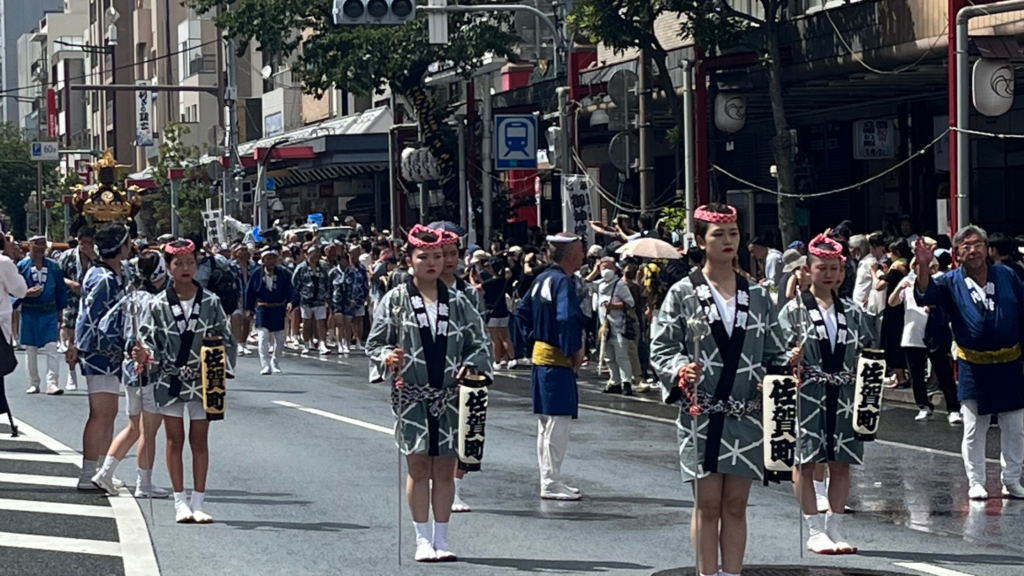
Koenji Awaodori (Tokyo)
Event day and Place: End of August, West Tokyo
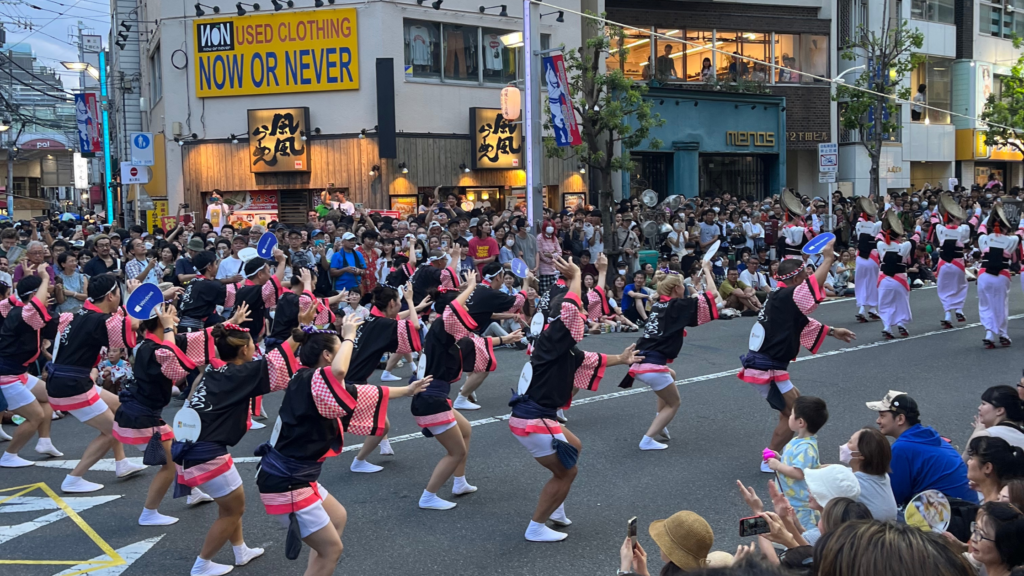
What is the festival:
The Koenji Awa-odori Dance has become one of Tokyo’s most renowned summer events, with more than 10,000 dancers and a million spectators. Embedded within its 66-year history is the desire to bring joy to people through the smiling faces of the performers. This is the first time in four years performances will be held outside, with passionate dancing taking place at eight venues.
During the day, two locations will present thrilling stage shows. Enjoy the return of Awa-odori dancing to the streets of Koenji over two days.
The festival focuses on the traditional dance, whose origins can be traced to O-bon, a Buddhist ritual held to celebrate the return of the deceased in the world of the living for a few days.
The festival can be observed as soon as getting off the train at Koenji station, from 5 p.m. The groups successively parade until 8 p.m., and spectators can watch from the sides of the large Konen Dori avenue, that stretches toward south until Shin-Koenji subway station.
History
This festival started with the purpose of revitalizing the town of Koenji in 1957. Because no one in Koenji had actual Awa odori experience, the initial years of the festival didn’t look much like the Tokushima original, but it slowly came to resemble the real thing as the years went on. The celebration also expanded in scope, with several other Koenji shopping streets joining in on the action.
Awa was the name of a province on the eastern edge of Shikoku (present-day Tokushima Prefecture), and “odori” is the Japanese word for “dance.” The Awa odori ren (dance troupes) typically dance in a two-step rhythm called zomeki. Women wear large, pointed straw hats and dance on their tiptoes in wooden clogs with their arms waving in the air, while men take a crouched position, sometimes wielding uchiwa (fans) or chōchin (lanterns). They’re followed by the hayashi, or instrument section, which features thundering taiko, gongs, shamisen and flutes.
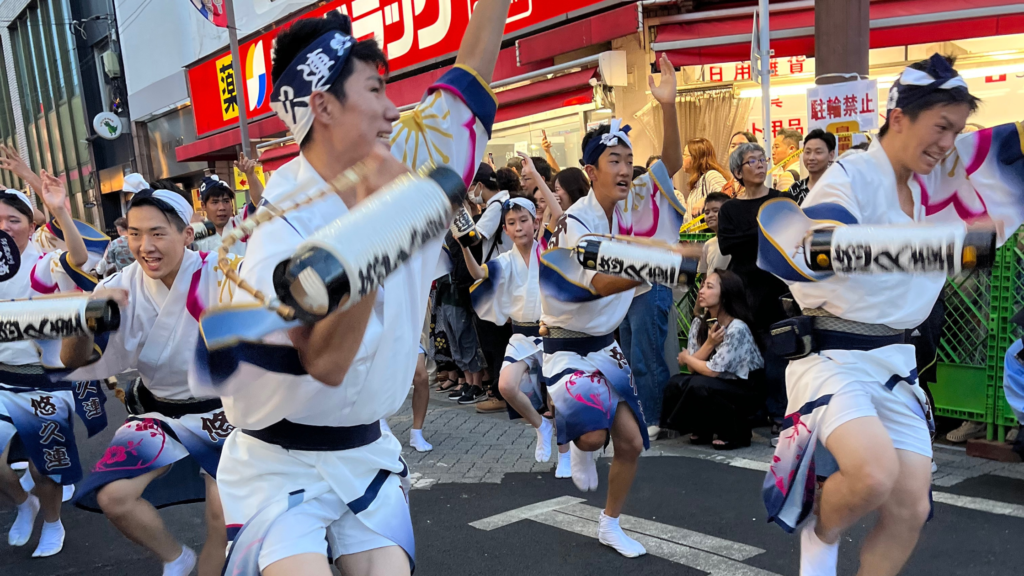
Highlight:
Over 10,000 dancers and musicians, men, women and sometimes children, gather in Ren groups to parade performing an original choreography with the same basic steps and following the rhythm of lively music over the two days on the streets. The friendly atmosphere and memorable show are the staples of entertaining evening.
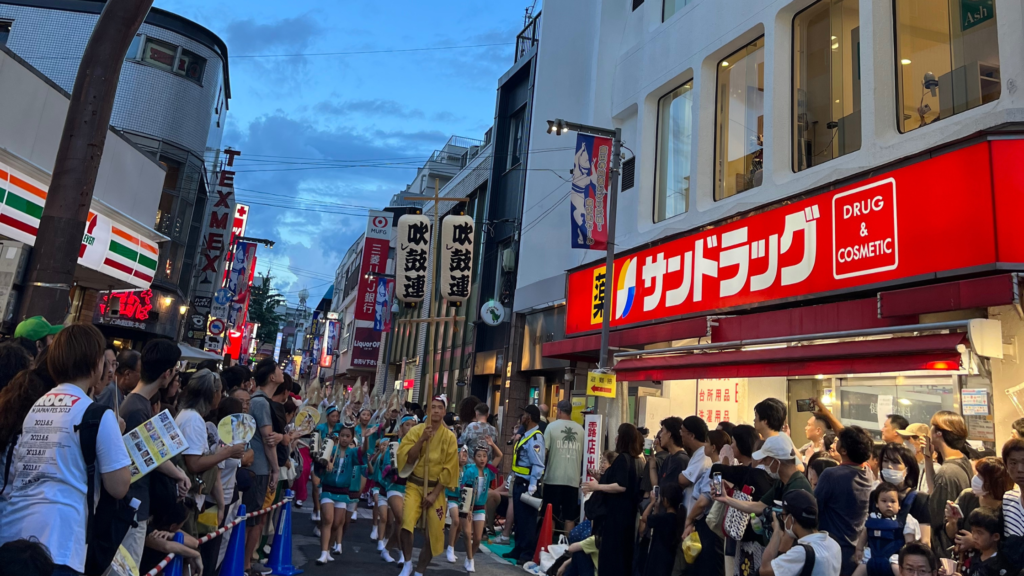
Summer festivals is almost finish, but other season festivals will continue in various places.
Although daytime sightseeing can be quite difficult in the hot summer, there are many fun events such as fireworks and night festivals.
What kind of festival will you enjoy next summer?
